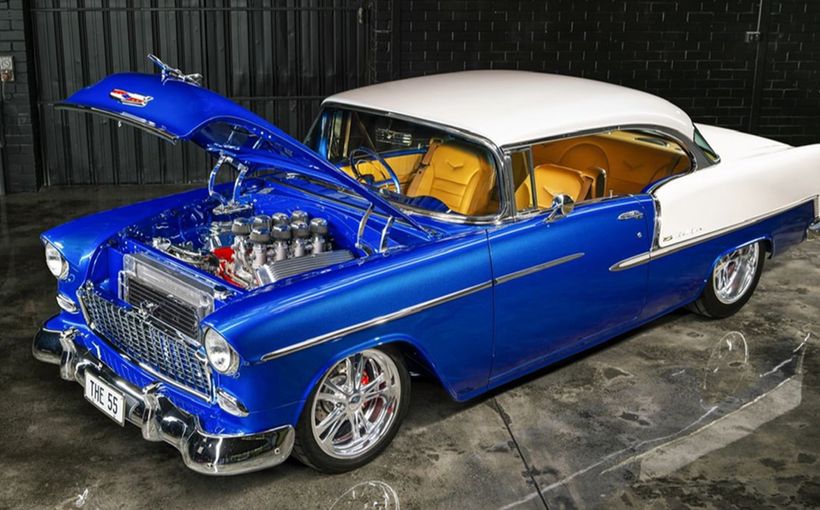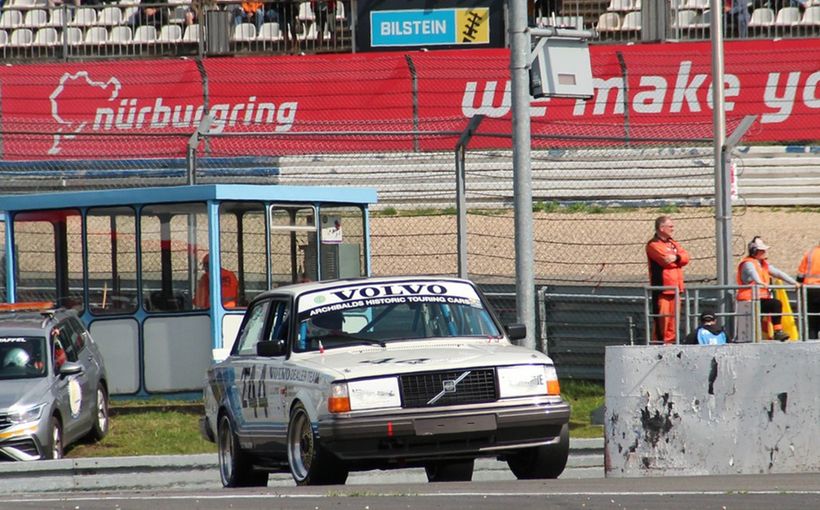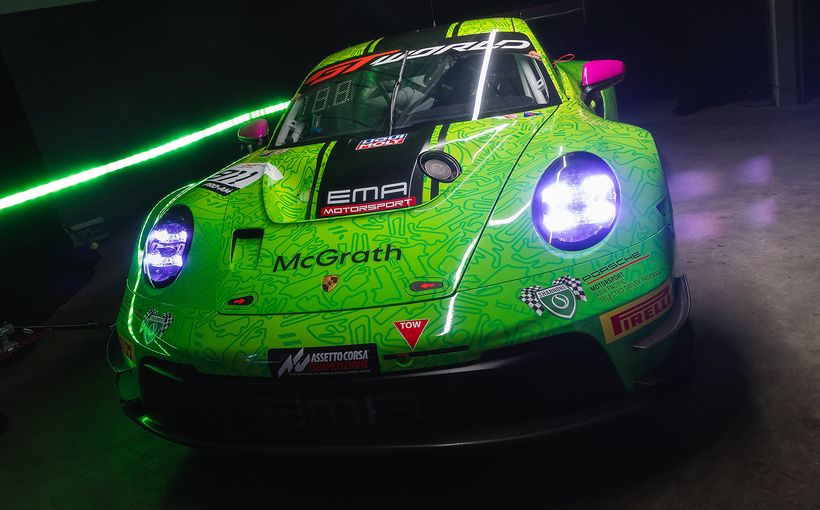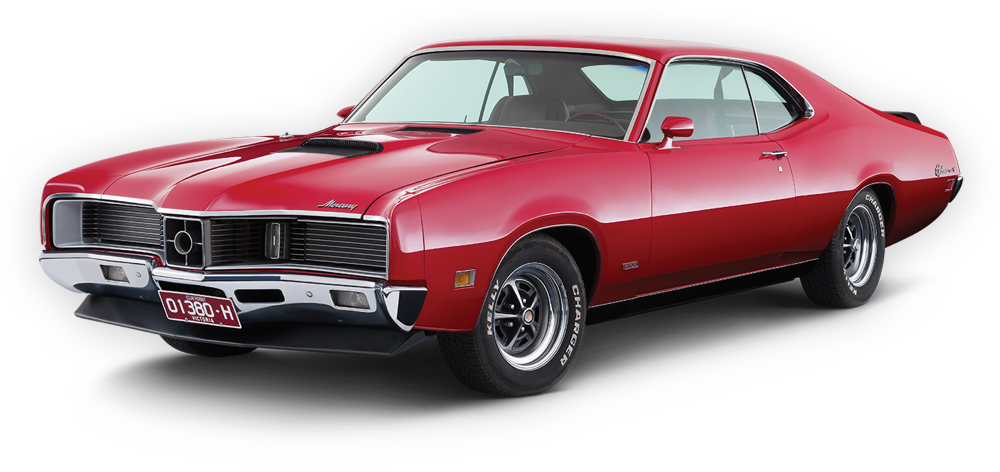Brough Superior SS100: Rolls-Royce Quality. Superbike Performance.

Image: https://en.wheelsage.org/
By the 1920s Rolls-Royce’s reputation for producing the best car in the world was beyond question. So, when burgeoning British motorcycle manufacturer Brough Superior was famously described at the time as ‘the Rolls-Royce of motorcycles’ it was warmly embraced by a wealthy upper-class clientele that wanted to own a motorcycle that was also ‘superior’ to any rival: the SS100.
Company founder George Brough naturally started using the phrase in his sales literature, which was originally quoted from a road test in The Motorcycle by journalist H.D. Teague when testing one of Brough Superior’s models in 1923.
Rolls-Royce management was hostile to anyone enhancing their brand in this way and was soon knocking on Brough’s door to voice its disapproval. However, after George provided a guided tour of his spotless facility, in which staff wearing white coats and gloves were hand-assembling motorcycles with surgical precision, the Rolls-Royce representatives were so impressed they endorsed his continued use of the phrase!
“As all Brough Superior SS100 bikes were made bespoke to customer order, there are many variations possible and it has been said that no two were identical,” writes Silodrome’s Jon Branch.
“When a customer came in to order a Brough the process was very much like that experienced by a customer who went to one of London’s ‘best’ gunmakers. The customer was measured as if for a custom gun or Saville Row suite. The shape, length and position of the handlebars and controls were custom fitted to the customer, so the bike would feel like it fit them ‘like a glove’ because it was made to do so.”

The Brough Superior SS100 was the zenith of motorcycling for much of the 1920s and ‘30s.
Image: www.brough-superior-motorcycles.com
Image: www.brough-superior-motorcycles.com
The SS100 (or Super Sports) represents the pinnacle of Brough Superior. It was not only hand-assembled using the finest components with meticulous attention to detail, but was also its best-handling and fastest model. As its name promised, each SS100 could achieve a top speed of at least 100mph (160km/h) which by 1920s standards seriously put the ‘Super’ in Super Sports!
It was the fastest production motorcycle in the world at the time. Esteemed motorcycle journalist/racer Alan Cathcart can attest to its capabilities, having briefly owned a 1937 SS100 in the early 1970s. Its performance was still astounding then, despite its pre-war origins.
“You can imagine what happened the first time I took the Brough for a ride,” he told The Motorcyclist. “On a downhill stretch of A2 headed toward Dover, I did the magic Ton on a bike for the first time. Even after the road flattened, the needle on the 120-mph Smiths speedometer still flickered well into the triple digits. The SS100 was a true ton-up motorcycle—and the first real superbike.”
Naturally, this refinement and performance came at an elite price of around £170 - when you could buy a modest cottage in Britain for £200! However, George Brough’s skill in creating a niche product that would appeal to Britain’s upper classes was profound, which ensured healthy demand from wealthy clients willing to pay handsomely for such esteemed status.

Brough Superior produced numerous models prior to its SS era, starting with the 1920 Mark 1.
Image: www.brough-superior-motorcycles.com
Image: www.brough-superior-motorcycles.com
A Superior Brough
George Brough started working for his father William E. Brough in the family’s W.E. Brough & Co Nottingham motorcycle manufacturing business established in 1908, where he became well educated in all aspects of motorcycle design and manufacture.
George was also a talented rider with a need for speed. He’d started competing in 1906 at the age of 16 when still at school and soon made a name for himself, winning numerous gruelling high-profile events including a gold medal performance in the 1912 Scottish Six Days Trial.
Therefore, it was inevitable that father and son would clash on the future direction of W.E. Brough, which was known for producing solid but staid motorcycles with 500cc flat-twins.
George envisaged a unique British take on the latest Harley-Davidson and Indian US imports with their powerful V-twins but built to, well, superior standards.
George left the family business when in his late 20s and established his own modest manufacturing facility also in Nottingham in 1919. It’s reported that when William Brough was told George was going to call his motorcycles Brough Superior, he jokingly responded by saying: “I suppose that makes mine Brough Inferior!”


George Brough was inspired by contemporaneous V-twins from the US when he set up shop.
Images: Harley-Davidson/Indian
Images: Harley-Davidson/Indian
George launched his first model in late 1920 and from the start his hand-built creations were revered for their elegant design, peerless build quality and jewel-like finish. The first model used a British-made side-valve V-twin produced by J.A. Prestwich (or JAP for short) paired with a three-speed Sturmey-Archer gearbox in a twin-cradle tube frame.
In its formative years, Brough Superior trialled numerous engine suppliers and offered several models with varying displacements. Like numerous British rivals, George was relying on major components sourced from outside suppliers, so it took considerable smarts on his part to create perceptions of Rolls-Royce superiority to justify the high price of his motorcycles.
That included compelling statements in his advertising like: “All component parts fitted to Brough Superior machines are made exclusively to my designs and special requirements.”
Branch: “George Brough would go to the extreme of assembling a motorcycle twice; the first build for testing and ensuring all parts fitted perfectly, then the bike was stripped down, painting and parts plating would be done, and it would be finally assembled and tested.
“His big selling point was superiority in quality control…you knew you were getting the best that money could buy, that no expense had been spared in making it as close to perfection as human engineering can accomplish.”

Brough Superior SS models offered ‘superbike’ performance before the term was even invented.
Image: https://en.wheelsage.org/
Image: https://en.wheelsage.org/
Super Sports
George Brough continued to indulge his passion for high performance motorcycles and high speeds through competition use, in which Brough Superior was very successful in the early 1920s.
The findings from that development work formed the basis of his Super Sports models, which would epitomise his company’s philosophy of superior quality and performance.
The first was the SS80 released in 1922. The number ’80’ denoted a top speed of at least 80mph (130km/h) and each hand-built example that rolled out of the Nottingham works came with a signed guarantee from George Brough that it could reach that velocity within a quarter-mile, as each was assessed by a factory test rider (nice job if you could get it!) before being released to its customer.
The SS80 was equipped with a thumping side-valve JAP V-twin of 988cc displacement and available in standard or deluxe model grades, with the latter featuring the enhanced ride comfort of coil-spring cantilevered rear suspension.

SS80 gave sports riders a tantalising taste of things to come.
Image: https://en.wheelsage.org/
Image: https://en.wheelsage.org/
SS100: the ultimate Brough Superior
The SS80 received rave reviews from customers and journalists but George Brough was never one to rest on his laurels and set his sights on a new SS model that would raise the top speed to 100mph (160km/h).
Behind the scenes, J.A. Prestwich and Brough Superior engineers had been hard at work on the design and development of a more modern overhead-valve version of its large capacity V-twin, which would be more than a match for powerful equivalents from Harley-Davidson and Indian.
In 1924 this new engine was unveiled, with its cylinders arranged in a 50-degree configuration and each cylinder equipped with dual camshafts and two valves operated by pushrods. Its engine code was JAP 8/45 with ‘8’ denoting the new engine type and ‘45’ its RAC horsepower rating.
Brough’s team soon assembled another mule to test the new engine and it easily surpassed 100mph. It was the breakthrough Brough needed to kickstart his dream.

A production motorcycle that could exceed 100mph was seriously F-A-S-T in 1925.
Image: https://en.wheelsage.org/
Image: https://en.wheelsage.org/
The resulting SS100 was guaranteed to reach or exceed such a stunning speed from its big four-cam OHV twin, available in displacements ranging from 980cc to 996cc and up to 75bhp depending on model.
The SS100 also had a stronger Sturmey-Archer three-speed gearbox, upgraded drum brakes (which were still barely adequate for such speeds) and the finest handling courtesy of the company’s twin-cradle frame, patented Harley-Davidson style ‘Castle’ forks (made by the Castle Fork & Accessory Company) and the choice of either a traditional rigid rear or deluxe rear suspension.
And, of course, it was beautiful to look at, with Brough Superior’s sublime craftsmanship evident in every detail. It was arguably the fastest and most desirable production motorcycle in the world.

SS100 Alpine Grand Sports was tailor-made for long distance touring - at up to 100mph no less!
Image: www.brough-superior-motorcycles.com
Image: www.brough-superior-motorcycles.com
The SS100 was launched in 1924 and offered in three models, starting with the standard SS100 and later expanding to include the SS100 Alpine Grand Sports and SS100 Pendine.
The Alpine Grand Sports or AGS was designed for long distance touring and named in honour of the SS100 factory team that starred in the 1925 Austrian Alpine Eight Days Trial. It came standard with more ground clearance and deluxe rear suspension plus dual tool boxes and a small windscreen, but buyers could add useful options like larger pannier bags, dual headlights and more.
The AGS engine came standard with redundancy systems like two magnetos and two oil pumps for optimum reliability when touring, plus a lower compression ratio to allow for the inconsistent quality of gasoline encountered when touring in the 1920s.
The Pendine launched in 1927 was the fastest of the SS100 range and named in honour of the long and smooth Pendine Sands beach in Wales where Sir Malcolm Campbell set his first land speed record for cars in his purpose-built Blue Bird in 1924.
The Pendine came with a higher top speed guarantee of 110mph (176km/h) and was clearly designed with competition in mind, being made as light as possible with a rigid frame, minimal equipment and high-octane racing fuel needed for its high compression engine.
In 1928 George Brough rode a specially-prepared SS100 to set a new world land speed record for motorcycles, when he achieved an official two-way run of 130.6mph. At the time, Brough Superior - and indeed its founder - were the fastest things on two wheels!

Arguably Brough Superior’s most famous customer was British war hero T.E. Lawrence (aka Lawrence of Arabia). He owned three SS80s and seven SS100s but tragically died from head injuries after crashing one near his UK home in 1935.
Image: www.brough-superior-motorcycles.com
Image: www.brough-superior-motorcycles.com
Beginning of the end
Brough Superior appeared untouchable by the end of the roaring '20s and despite the 1928 arrival of a formidable rival in Vincent HRD maintained its peerless status to the late 1930s, according to Cycle World’s Dennis May.
“The Brough’s superiority proved a headache for the importers of comparably sized American bikes, but played hell, too, with the sales of such British big Twins as Zenith, McEvoy, Trump, Croft, New Imperial, AJW, Montgomery, OEC, P and P. One by one, over a period of 18 years, these contenders all bit the dust, leaving BS and Vincent as the sole English survivors in the high-performance big banger class by the outbreak of World War II.”
By 1935 George Brough sought to upgrade the SS100’s ageing JAP engine due to quality control issues. He approached Matchless to supply its more modern and powerful 50-degree 990cc V-twin used in Morgan’s three-wheeled sports cars, but like all components worthy of Brough Superior service it was a bespoke version made to George’s specific requirements.
The new engine was paired with a new four-speed gearbox supplied by Norton and this combination allowed Brough Superior to maintain its peerless quality control and performance standards. However, behind the scenes George and his engineering team were working on an ambitious project aimed at being the ultimate Brough Superior.

The Brough Superior Dream, more commonly known as the Golden Dream, was destined to remain just that.
Image: www.nationalmotorcyclemuseum.co.uk
Image: www.nationalmotorcyclemuseum.co.uk
At the 1938 London Motorcycle Show at Earls Court, he unveiled his ‘Dream’ concept. With its eye-catching gold finish, it was powered by the company’s first in-house engine design.
The innovative 998cc four-cylinder, which George described as a “flat vertical” engine, comprised two horizontally-opposed twin-cylinder engines mounted one on top of the other with counter-rotating crankshafts geared together to provide perfect dynamic balance.
It was paired with either three or four-speed transmissions manufactured by gear and machine tool specialists David Brown Ltd (later of ‘DB’ Aston Martin ownership fame) to Brough’s design. He also proposed that its inherent smoothness would be optimised with the use of an enclosed shaft (rather than the usual chain) to drive the rear wheel.

After being dormant for decades, Brough Superior was resurrected under new ownership in 2013 and today produces exquisite hand-built SS100s that embody George Brough’s founding philosophy of mechanical excellence and craftsmanship, but with modern technology and production methods.
Image: www.brough-superior-motorcycles.com
Image: www.brough-superior-motorcycles.com
However, by 1939 Britain was at war with Germany, which brought an end to motorcycle production with the final batch of SS100s produced in 1940.
The Golden Dream project was also shelved as the company’s facilities were repurposed to support the war effort, making precision components for Rolls-Royce Merlin V12 aircraft engines no less.
However, at the end of hostilities in 1945 George Brough did not revive his motorcycle production, which numerous historians suspect was due to crippling development issues with the ambitious Dream engine. It was the end of a remarkable era, as Alan Cathcart reflected in 2012:
“Even 75 years on, the SS100 remains a wonderful road bike. It’s a shame more survivors aren’t regularly ridden, but that’s an unavoidable reality when restored examples regularly change hands for more than a quarter-million dollars.
“Even though I’ll never own another, I’ll always have the memory of straddling that wide, sloping tank and tucking behind that tiny screen as the speedometer needle climbed toward three figures. Now as then, Brough Superior stands for The Best.”








